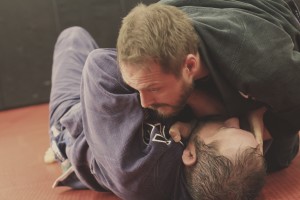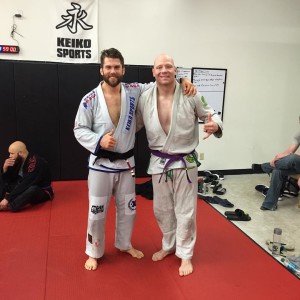3 Ways To Fight Hesitation On The Mat
Recently one of my white belts asked me, “How can I take away the hesistation during rolling.”
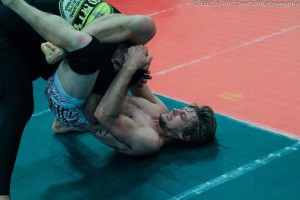 He went on to explain that he would see an opportunity for a technique (extended arm, open neck, etc) but he felt unable to go for the move. For whatever reason he just couldn’t pull the trigger and go for it, he felt hamstrung and not willing to take the chance.
He went on to explain that he would see an opportunity for a technique (extended arm, open neck, etc) but he felt unable to go for the move. For whatever reason he just couldn’t pull the trigger and go for it, he felt hamstrung and not willing to take the chance.
This is a problem many of us have faced and, maybe even, still face from time to time.
In this blog I’m going to share the bits of advice I gave to him and that have worked for me and my students over the years.
Drilling
Drilling techniques is a great place to start. Doing repetitions of a movement helps develop muscle memory and allows your body to execute the technique faster. I’m sure you’ll agree, the more you do anything. The more efficient, and comfortable, it becomes.
This applies to hesitation on the mat because if you are noticing the opportunity to execute a technique in Brazilian Jiu-jitsu. It’s often too late.
With the fast moving dynamic of rolling. You have to be able to react quickly to the situation in front of you. There just isn’t a lot of time for thinking.
Instead of noticing an opening for a technique and then watching it disappear before you can take advantage. Having your techniques drilled to the point where they’re faster and require less thinking will allow your body to take advantage of the opportunities as they pop up.
Drilling Tips
I know not everyone has all day to train. So some great times to drill are before class, after class or during scheduled open mats or open gym time. I have many students who will come in during the middle of the day just to squeeze in some drilling. They’ll tell you themselves how beneficial it’s been for their game.
It’s also smart to put effort during the drilling time that is given to you during regular class. Instead of just counting down the minutes till rolling.
Try drilling 1 technique at least a 200 times or more before moving on to a new one.
Rolling With Less Experienced Training Partners With A Purpose
Using a new technique is tough against people of the same level. If you’re going tit for tat with someone and you make a mistake. You’re probably going to be in a bad spot afterwards. So most tend to stick to their “A Game.” But in order to really develop a move, you have to use it during live rolling.
This is where you can use your less experienced training partners. When you’re against someone you can control easily. The risk for messing up is less. If you go for the technique and screw it up. You’ll probably be able to get back to a decent position. By having less fear and anxiety you can be more comfortable trying new things on the mat.
As and added bonus. While you’re boosting a weak area of your game. You’re giving that less experienced person a chance to engage and work a little. Instead of being crushed. This is more productive for you and helpful to them.
Meat Head Analogy
Here’s a short analogy. If you were going to the gym and wanted to bench press 300lbs but your max was 150lbs. You wouldn’t put 300lbs on the bar. You would build up incrementally, right? The same can be true for you with your techniques.
There’s a gap between learning a technique for the 1st time and using it against someone of the same skill level. You can fill that gap by using your less developed techniques against your less experienced training partners. Over time you’ll be more comfortable with them and you’ll be ready to try them out during your rolls with people of the same skill level without hesitation.
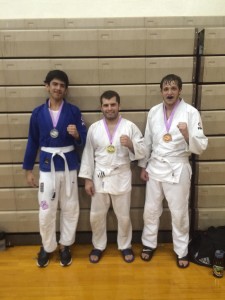
Tip
Think of some moves that you are working on, would like to improve or are new to your game. Then when rolling with lesser experienced Brazilian Jiu-jitsu training partners. Restrict yourself to just those techniques and avoid your “A Game.”
Mentally Conquer Yourself
Brazilian Jiu-jitsu can bring out our mental weaknesses. Which is good! It forces us to have the presence of mind to work through them.
If you are finding yourself unable to pull the trigger because you are fearful or afraid. Identify the ridiculousness of that thought process and phase it out. Think to yourself, “What is the worst thing that will happen?” At worst you will lose the match or roll. But who cares, it’s a learning experience, and by taking the chance you are improving.
You’re also conquering the fear you might have, which is valuable by itself. You cannot hope to be the best that you can be in anything, Brazilian Jiu-jitsu or otherwise, if you cannot dominate you’re thoughts and self.
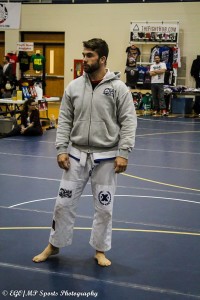
Black Belt Fears
When I started competing as a Black Belt I had a lot of trouble going after it. I had a tendency to play it safe because I was afraid of losing or performing well. This fear of losing caused me to do even worse. My best matches in the beginning happened when I would be down on points and was forced to attack.
Following a bad performance I read something that stuck with me and changed my focus. Instead of focusing on beating my opponent and not losing. My focus shifted to overcoming myself, using my style of BJJ to the best of my abilities and winning.
I never wanted to walk off the mat again with the question of, “What if I would have gone for it?” burning in my thoughts. I never wanted to leave the mat with a feeling of, “I bitched out because I was scared.”
Since then I have performed the best that I ever have in BJJ competitions and it’s because I am able to let go mentally, and just go for it.
Tips
If there are particular situations that cause you anxiety or fear. Prepare for them. Whether it’s a competition or just a roll with a tough partner in the gym. Be ready to remind yourself how ridiculous it is to be fearful of trying something on the mat. There is nothing bad that can come from it. Just a chance to learn and grow. Combat the negative self talk with something positive. Give yourself a reason why you need to go for it, instead of focusing on why you shouldn’t.
For me, there is nothing worse than a “what if.” So it’s better to have went for it, than to have had the chance right in front of you and let it slip passed you because you were scared.
I hope these three tips help you improve your ability to take the chance and really go for the sweep, submission, pass or whatever it is you’re going for. You may adjust the strategies I’ve listed to suit you, which is fine. But at the very least, hopefully it will get you thinking.
Thanks for reading!
-Chewy
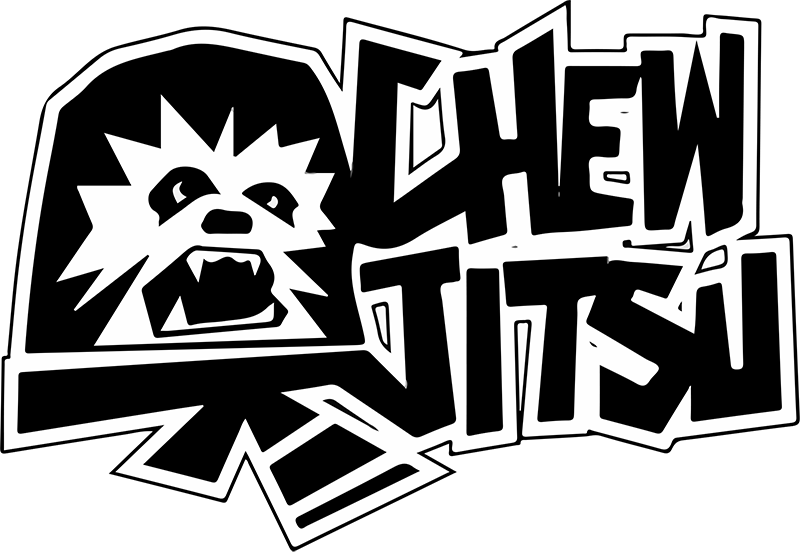
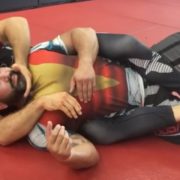

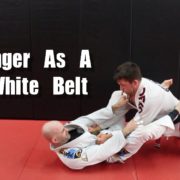
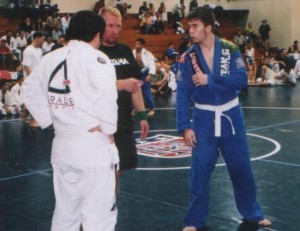
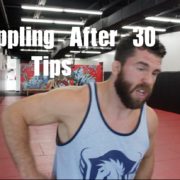
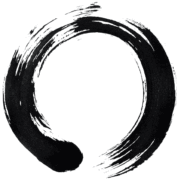
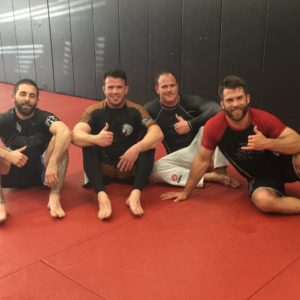
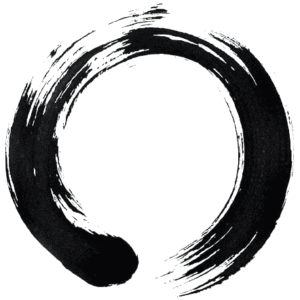

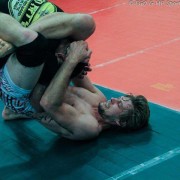
 He went on to explain that he would see an opportunity for a technique (extended arm, open neck, etc) but he felt unable to go for the move. For whatever reason he just couldn’t pull the trigger and go for it, he felt hamstrung and not willing to take the chance.
He went on to explain that he would see an opportunity for a technique (extended arm, open neck, etc) but he felt unable to go for the move. For whatever reason he just couldn’t pull the trigger and go for it, he felt hamstrung and not willing to take the chance.

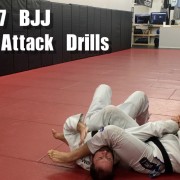

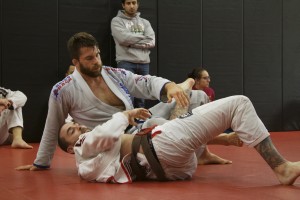 One important lesson, in regards to BJJ drills, I’ve learned over the years is to chain movements and techniques together
One important lesson, in regards to BJJ drills, I’ve learned over the years is to chain movements and techniques together
